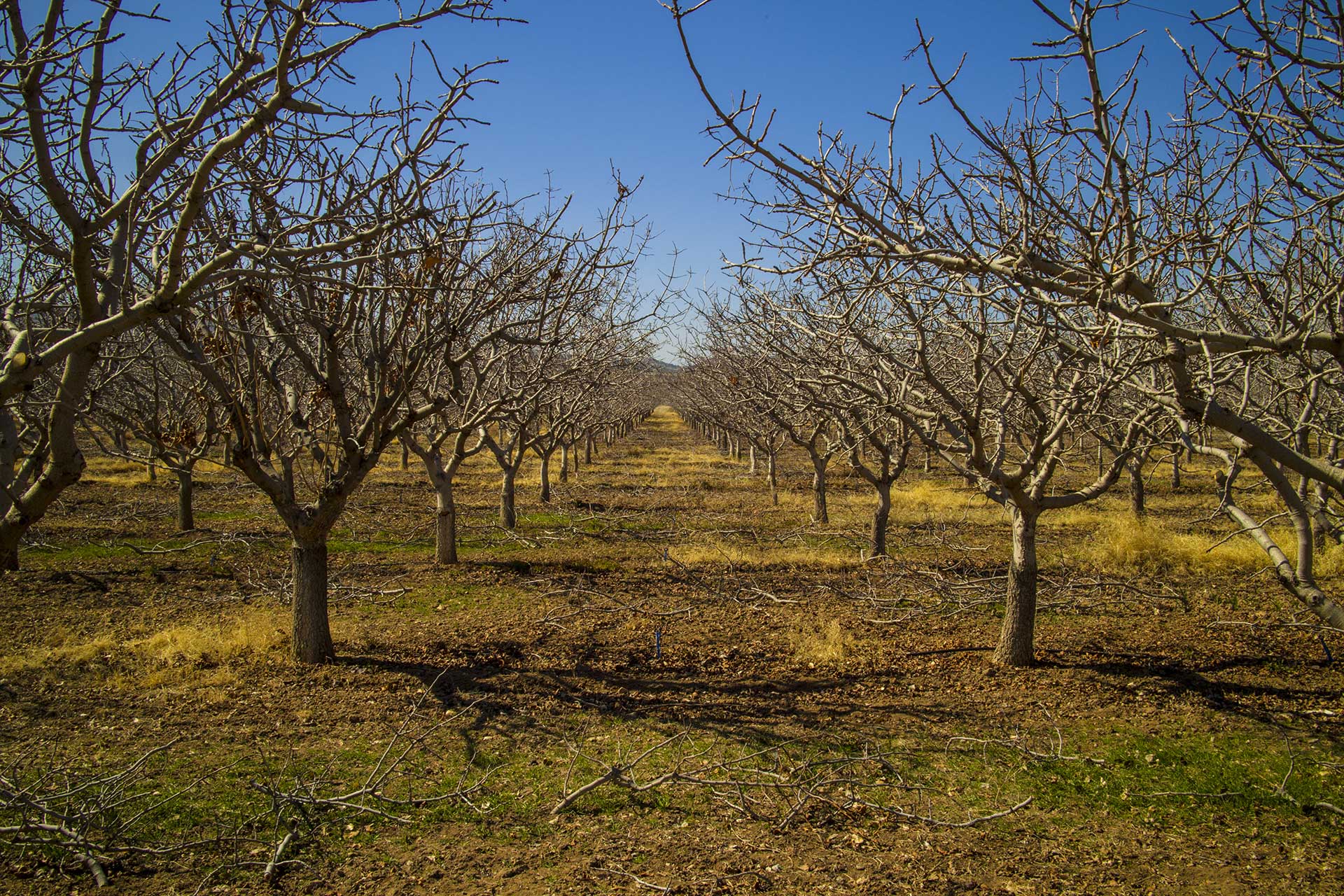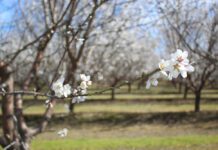Almonds and walnuts may be California’s heavy hitters in the tree nut market, but pistachios also hold a valuable place, even if this crop experiences less of the spotlight, and has less research that finely tunes the growing processes.
“There’s no step-by-step guide because everyone does different things,” says Craig Kallsen, University of California Cooperative Extension (UCCE) farm advisor specializing in citrus and pistachios.
Even though there aren’t any hard and fast rules about pistachio orchard best practices, there are a few things growers can do to ensure their orchard remains healthy during the winter months.
Slowing Growth
A significant step in the preparation for winter for pistachios begins in August when the water gets turned off. This is especially important for young trees under six years, and in areas where there is not a significant transition from summer to winter, as these trees suffer from juvenile winter dieback.
“We’re trying to slow the tree’s growth and get rid of some of that vigor as we head into winter time,” says Kallsen. Otherwise, the quick freeze that can occur at the end of October and into November and early December can kill the trees or damage the way they come out in the spring.
While the finer details in the differences of young rootstocks haven’t been completely uncovered yet, the intensity of this growth varies among them, with some experiencing a more vigorous growth and not slowing down as easily as their counterparts. This is a bigger problem in growing regions that are in low-lying areas, such as old lake beds, where the cold air likes to pond.
These complications target juvenile trees, or those that are not bearing quite yet and appear somewhat juvenile. For mature trees, there doesn’t seem to be much of a problem, as they seem far better equipped to handle the abrupt changes in temperature. Why that is, no one is quite sure just yet, but speculation leans towards the ideas of thicker bark, the bearing of the tree, or maybe just a cyclical slowdown after harvest.
As part of the slowdown, and as a practice that has yielded less damage, nitrogen applications are reduced during the summer months, and drought conditions are encouraged.
“It also has to do with how much salt is in the soil,” adds Kallsen.
Salt Leaching
Researchers are just starting to get a handle on the rather complex phenomenon that is a soil’s salt content.
Leaching salt from a pistachio orchard’s soil is a very important wintertime activity, and while experts might disagree about the utilization of fertilizers after harvest, it’s generally not a good idea to add it if you’re going to leach.
If fertilizers are added before salt leaching, “[Grower’s] are just going to wash a lot of that nutrients right through the profile, and it won’t be available for the tree’s roots,” says Kallsen. “I tend to be more of a fan of adding nutrients at the end of March, beginning of April.”
For nutrient applications, like nitrogen, there aren’t necessarily best practices rather than suggestions from advisors out in the field. The same holds true for other customs that seem to work well for pistachio trees, even if there isn’t hard data for them. “We just don’t have the database like they have for almonds,” says Kallsen.
Along with irrigation shut off and salt leaching, another recommendation for wintertime prep is tree training and pruning. Based on observations in the field, trees seemed to perform better. For those pruned in-season, and especially for those around three years old, they just stop growing.
In-season training when the trees are in their first or second leaf involves taking off a lot of wood. On young and vigorous trees, it’s something growers can do. After those first two years, however, growth seems to come to a standstill. Not only that, but on bearing trees, in-season pruning removes a lot of the bearing nut surface and can decrease yield.
Preventing Pests
Another thing that can decrease pistachio crop yield are pests, such as navel orangeworm and Gill’s mealybug. Gill’s mealybug likes to feed within the pistachio cluster, and hinders nut development by taking for itself the carbohydrates and other nutrients that are intended for the plant. Shell staining and reduced kernel size decrease the market viability for these nuts. For those that become entirely damaged from infestation, they can become sites for navel orangeworm
The fall, after harvest, is a good time to look for mealybug and mark infestation locations, which will then be monitored in the spring, and followed with appropriate necessary actions. Mealybug populations are the highest during late fall and winter, so it would be easier to identify the signature sooty mold or white aggregations.
Winter is not the time to apply pesticides for mealybug since this pest already has a high wintertime mortality rate. The crop does not experience damage at this time, and this is when the pest’s predators—the brown lacewing and ladybug—are the most active.
As for navel orangeworm, this pest can greatly damage the pistachio nut. While early signs include the pinhole-sized entrance into the nut, the worm eventually grows to feed on the entire nut, leaving behind a significant amount of webbing and frass. It can also leave the nut vulnerable to toxic molds.
As with all tree nut types, an aggressive winter sanitation program is of the utmost importance. Knocking mummies and then destroying all unharvested nuts is the most effective way to prevent navel orangeworm from finding sites to overwinter.
Winter Weeds
Pre-emergent herbicides can be helpful in controlling weeds, and in reducing the need for post-emergent herbicides later in the season. How effective preemergents are is fairly dependent on the amount of rainfall a particular region experiences, as the water helps activate the chemicals by getting them into the soil. Patient growers in drier regions can wait for a rain event, but they also know that they can’t depend on the weather.
In a very general sense, preemergent applications begin in November and December in an attempt to catch some help from the rain. Using the right herbicides—and in the correct ways—is key to the effects of the chemicals on the weeds, which is why keeping a weed survey can be so helpful. If growers know that to expect, they can prepare for it. And, even more effectively, they can spot spray, which helps to reduce herbicide resistance.
Postemergent herbicides are also an available option. Some are designed to be selective and target specific plant species, and others are not, just as there is also the option of either contact herbicides that directly damage the weeds, or translocated herbicides that move within the plant to kill it.
There aren’t many growers who use the reduced-herbicide option of cover crops, but for those who do, cover crop growth is seen about every other row.
Farm, crop, pest control advisors, and other personnel can help with these actionable steps, as well as with recommendations as to what works best for any particular orchard in a specific growing region.
















